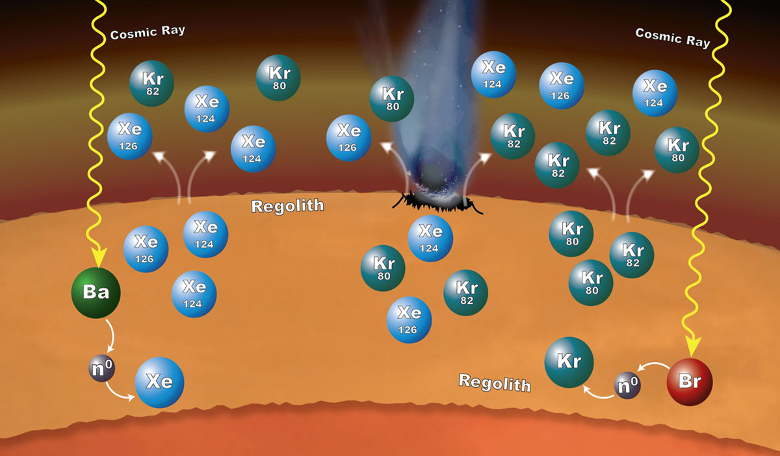NASA's Curiosity rover has unearthed clues that the Red Planet’s atmosphere has been fed with noble gases liberated from the martian soil by interactions with impacting objects and via erosion of its surface.
The team behind the discovery have been using the Sample Analysis at Mars instrument on board the rover, or SAM for short, to run a series of first-of-a-kind experiments to measure all the isotopes of xenon and krypton in the Martian atmosphere. This was a task that was previously undertaken during the Viking mission and from analyses of Martian meteorites and has given the team data to work from.
"What we found is that earlier studies of xenon and krypton only told part of the story," said Pamela Conrad, lead author of the report and SAM's deputy principal investigator at NASA's Goddard Space Flight Center in Greenbelt, Maryland. "SAM is now giving us the first complete in situ benchmark against which to compare meteorite measurements."
Using mass spectrometry to analyse chemistry in the surface material on Mars – a technique used commonly on Earth but something only SAM has done on another planet – the team found that some isotopic ratios, when compared with earlier samples, were a bit different than expected.
The researchers realised that these subtle but important differences might be due to a process known as neutron capturing, whereby neutrons transfer from one chemical element to another thus explaining why a few selected isotopes were more abundant than previously thought possible. In particular higher-than-expected levels of the isotopes xenon-124 and 126 could be due to an acquisition of neutrons from barium, while bromine on the other hand, might have surrendered some of its neutrons to produce unusual levels of krypton-80 and krypton-82.
And it is thought that this neutron swapping occurred through erosion of the martian regolith or via impacts onto the surface, subsequently releasing the gases into the atmosphere. “SAM's measurements provide evidence of a really interesting process in which the rock and unconsolidated material at the planet's surface have contributed to the xenon and krypton isotopic composition of the atmosphere in a dynamic way," said Conrad.
"The unique capability to measure in situ the six and nine different isotopes of krypton and xenon allows scientists to delve into the complex interactions between the Martian atmosphere and crust," said Michael Meyer, lead scientist for the Mars Exploration Program at NASA Headquarters in Washington. "Discovering these interactions through time allows us to gain a greater understanding of planetary evolution."
That evolution points to the notion that our martian neighbours atmosphere is more complex and interesting than simply being lost into space.











